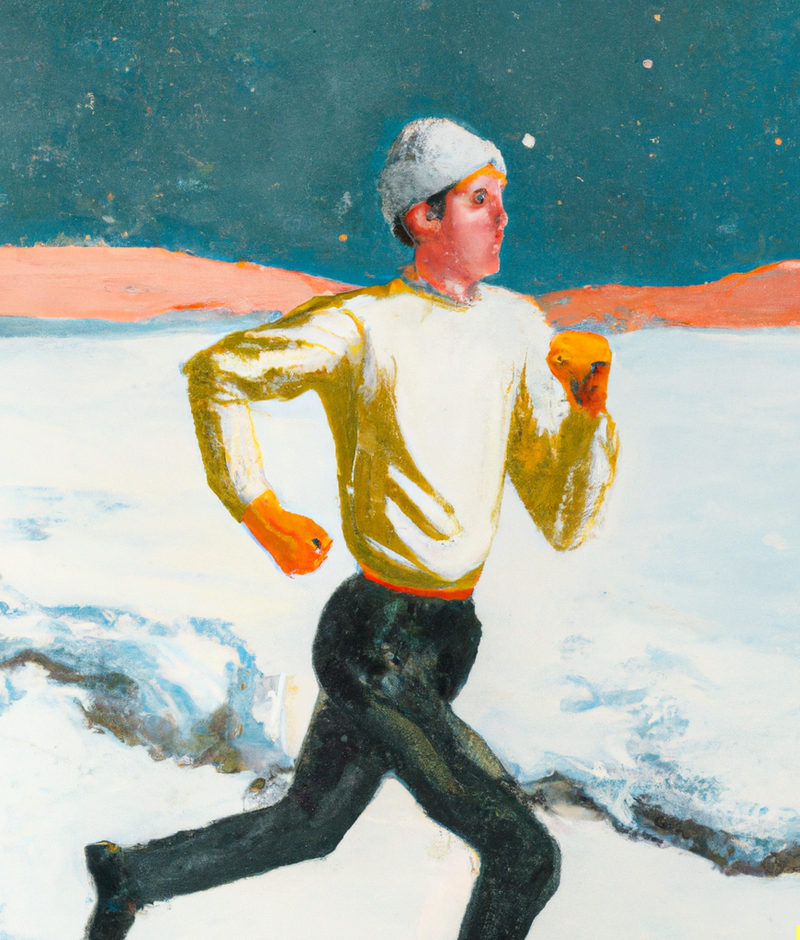
Cold Weather Running Tips
Posted
Cold Weather Running Tips
Winter brings festivities, snow, and stylish overcoats, but ‘tis also the season for adding unwanted inches to your waist. You know the predicament: as the cold weather sets in, it becomes harder to do outdoor activities like biking, golfing, and running. And that’s to say nothing of all the comfort food you’ll eat.
Fortunately, you don’t have to put away your running shoes just because the temperature drops. By following these cold weather running tips, you can stay in shape until spring raises her beautiful head once more.
Layer Up
Layering up for a social occasion in winter is easy — and, dare we say it, fun. Getting that right combination of shirt, sweater, and scarf is more interesting than summer dressing.
But when it comes to cold weather running, layering poses a challenge. Of course, you’ll need to be wrapped up more than you would in summer, but you don’t want to overheat and get uncomfortably sweaty either.
Although it might seem annoying, you’ll probably have to shed a layer during your run, as you’ll start off cold and gradually warm up once you’re in the groove. This doesn’t need to ruin your jog though: you can buy lightweight jackets that fold up to a pocket-size bundle, or you can tie the outer layer around your waist once you’re warmed up.
Your outfit should look something like this:
- Long-sleeve base layer: Your underlayer should be made from wool or a moisture wicking fabric rather than cotton, as cotton will gather sweat and could end up soaking wet.
- Leggings, tights, or pants: You don’t really want to be stripping down to shorts in the park or on the sidewalk, so wear long, technical legwear that won’t get overly sweaty.
- Socks and shoes: Whether you pull them up over your leggings or not, your cold weather running socks should go above your ankle and be made from a sweat-wicking material. Wear your normal running shoes unless it's icy (and if you’re thinking about running while it’s icy, don’t).
- Outer shell: A packable, lightweight running jacket is a godsend in the winter months, as it can be easily put away once you’ve warmed up.
- Hat, gaiter, and gloves: A lightweight hat or headband will stop you from catching a cold and, if the air is particularly chilly, it helps to have a gaiter in front of your mouth so you’re breathing warm, humid air. Lightweight fleece gloves are also easy to put in your pockets if you start overheating.
Warm Up Indoors
You’re more likely to suffer from muscular injuries in cold weather than warm weather, as your muscles are tighter. This makes warming up before running especially important during the cold months.
You can warm up your muscles more effectively (and comfortably) if you do your warm up indoors. Do this wearing your full outdoor outfit, then start your run immediately so there’s no time for your muscles to cool down.
A similar principle applies when you finish your run. Stretch indoors, then ditch those cold, sweaty clothes and jump straight into a warm shower.
Run During the Day
Running during the winter months isn’t just colder, it’s also often darker because the clocks have gone back to standard time. The sun might be shining during an after-work run in July, whereas it might be pitch-black at the same hour of the day in January.
If possible, try running in the morning or at lunchtime. Not only will it be more pleasant, it’s also much safer: drivers will be able to see you, and you’ll be able to see hazards like ice on the ground.
If you have to run at night, be sure to wear reflective gear and bring a cellphone with you.
Slow it Down
Many joggers prefer running in cold weather, as you sweat and chafe less than you do in the middle of a hot and humid summer. But that doesn’t mean you need to add hill sprints or speed workouts to your running program. Winter is actually great for extended, slower runs, which are safer in damp or icy conditions and less likely to cause muscular injuries.
Make a Goal for Spring Time
It’s hard to trade loungewear for running clothes when it’s cold out. So to make the prospect of cold weather running more appealing, set yourself a personal goal for spring time. This could be getting in shape, being able to run a set distance, or just being able to say, “yep, I ran three times a week all winter.”
Be Cool
If you take the right safety precautions, cold weather running is a great way to stay healthy during the winter months. You might even find that your favorite routes are surprisingly empty, with most people opting to stay indoors (suckers).
And if you’re looking for something warm and comfortable to wear after your cold weather jog, browse the Mizzen+Main holiday collection for knitwear, outerwear, flannel shirts, and more.